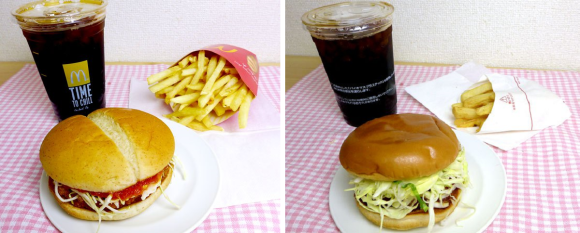
Here at RocketNews24, we’re all about forming stronger connections between Japan and the rest of the world. Incidentally, we’re also all about burgers and fried foods.
Sometimes, the planets align just right, and we get to check all three boxes at once, like we did today with our taste-test of McDonald’s new pork cutlet burger, a Westernized version of Japanese dish inspired by Western cuisine. And since the only thing better than a fried pork sandwich is two fried pork sandwiches, we’ll be comparing it to the nearly identical menu item from hometown hero Mos Burger.
First, a little background on what’s on our plates today. One of the most popular choices for a fortifying meal in Japan is tonkatsu – deep-fried pork cutlet (and not to be confused with tonkotsu, which is a pork bone-based broth used in some ramen dishes). While it’s now established itself as a traditional Japanese entre, tonkatsu was originally, like tempura, a take on deep-fried foods introduced by visiting Westerners. The “katsu” potion of the dish’s name is even a corrupted pronunciation of “cutlet.”
Tonkatsu is usually eaten with rice, but any number of restaurants and takeout joints in Japan also sell tonkatsu sandwiches, including domestic chain Mos Burger, where the roast katsu burger has been a popular menu item for years. McDonald’s isn’t willing to let Mos have the market to itself, though, and tossed its hat into the ring on May 7 with its new Tonkatsu McBurger.
Being extremely cheap individuals, we’d usually make a choice between the two based on which is less expensive. Of course, being equally gluttonous, we’ll also be needing some fries with our sandwiches, and here we run into a problem. McDonald’s charges 699 yen (US$6.85) for a tonkatsu burger combo that comes with a drink and fries, and Mos prices its similar set at 700. With just a single yen separating the two, we had no choice but to eat both and judge them on the basis of size and flavor.
Starting with the beverages, both sets come with medium soft drinks, and we couldn’t see a noticeable difference between their respective sizes.
Moving on to the fries, Mos’ are thicker, but also a whole lot fewer in number than McDonald’s spuds. By weight, the Golden Arches are 30 percent more generous here, so score one point for them.
Now, with the preliminaries out of the way, let’s start the main event. Tonkatsu burgers are pretty simple compared to ordinary beef-based burgers. There’s no sliced tomatoes or onions. You get the pork cutlet itself, some shredded cabbage, some sauce, and that’s all. Mos and McDonald’s both keep things orthodox by sticking to this short and sweet ingredient list.
▼ McDonalds (left) and Mos (right)
Here again, McDonald’s gives you more bang for your buck. The tonkatsu McBurger tips the scales at 163 grams (5.7 ounces), compared to the 152-gram Mos roast katsu burger. An 11-gram difference may seem like the sort of thing only aerospace engineers and drug dealers would get worked up over, but that should give you an idea of how seriously we take our fast food.
▼ McDonald’s heavyweight
▼ The svelte offering from Mos
Science hasn’t perfected zero-calorie deep-fried pork yet (and when it does, we’ll have finally achieved a utopia), so it’s no surprise that McDonald’s burger packs more calories, with the tallies for the two sandwiches being 414 and 369, respectively. Somehow a seven percent difference in weight balloons into 12 percent higher calorie count, but really, would you expect anything less from the king of American fast food?
Now that we were done crunching numbers, it was time to eat. We started with the new kid in town, McDonald’s Tonkatsu McBurger.
As we moved in for a bite, we suddenly became aware of a familiar scent. We’re guessing that McDonald’s cooks their tonkatsu in the same type of oil it uses for it French fries and fillet o’ fish, because it smells just like them. We could see this being a disappointment for those who are looking for a completely new experience, but long-time McDonald’s fans should feel right at home.
The cutlet’s breading is crispy, and the sauce tastes like a sweeter version of what you’d get with an order of chicken McNuggets.
Mos’ tonkatsu burger has a lot more shredded cabbage, which helps explain its lower calories to weight ratio. It also keeps its sauce between the cutlet and the veggies, giving it a cleaner appearance overall.
While the tonkatsu McBurger is unmistakably a McDonald’s sandwich, there’s nothing about Mos’ sandwich that immediately gives away its origins, with the possible exception of the fluffy bun that’s the same as that used for the chain’s ordinary hamburgers.
The sauce is less tangy and thus more in line with what you’d get if you ordered a pork cutlet with rice in a more traditionally Japanese restaurant. The breading also isn’t as crispy as the tonkatsu McBurger’s.
In the end, it’s hard to call a winner one way or another, as both sandwiches are tasty in their own right. If you’re looking to get the most food for your yen, or if you just can’t get enough of McDonald’s, we doubt you’ll be disappointed with the chain’s new sandwich. On the other hand, if the smell of McDonald’s oil takes you back to unpleasant memories of being a part-time teenage fry cook, Mos has got you covered.
Photos: RocketNews24
[ Read in Japanese ]

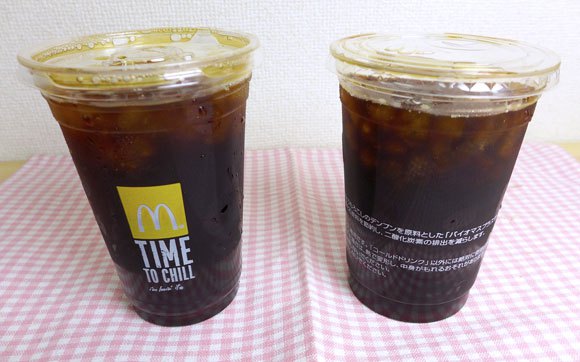
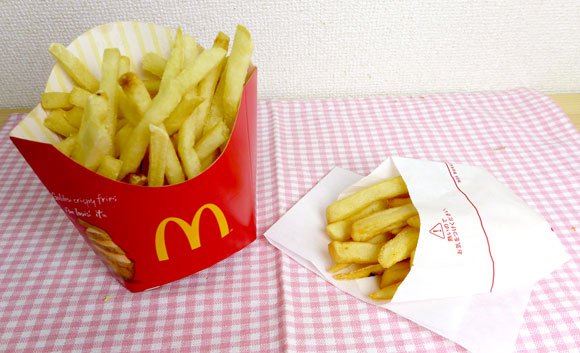
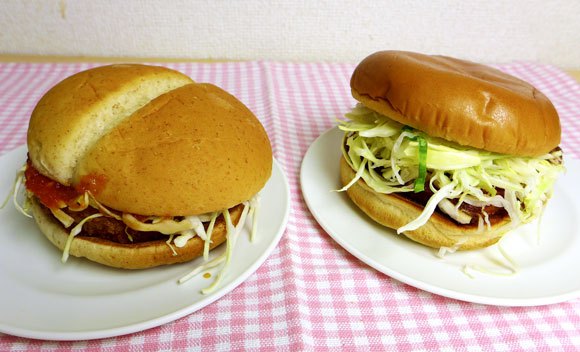
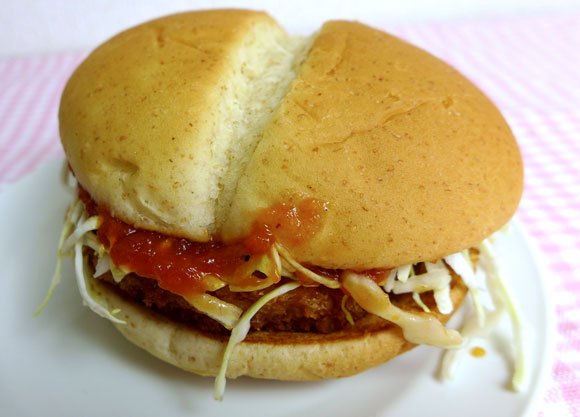
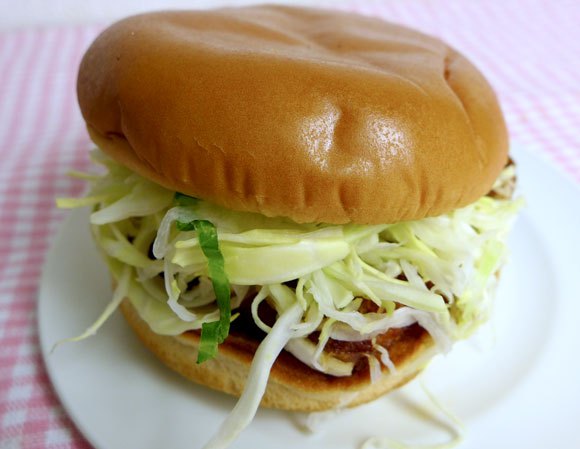
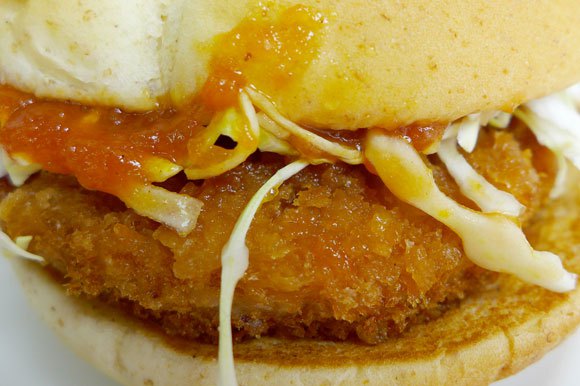
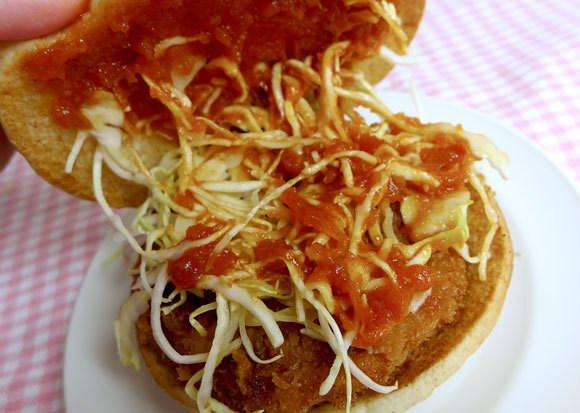
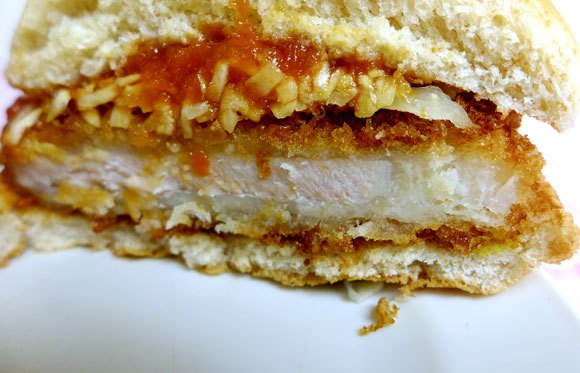
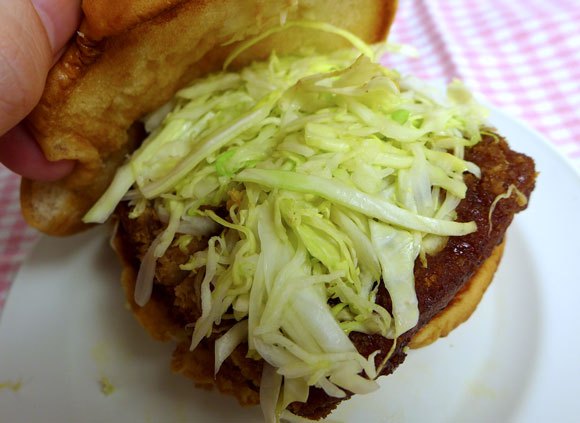
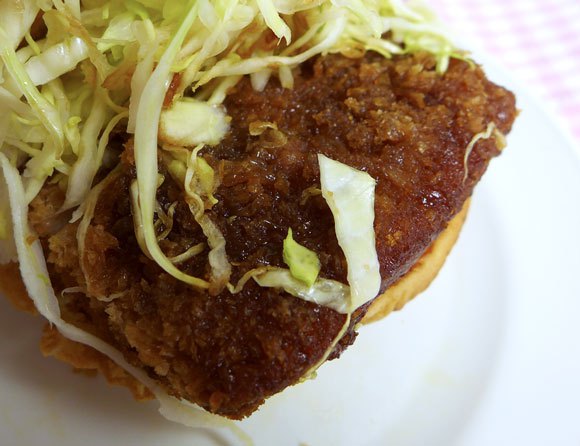
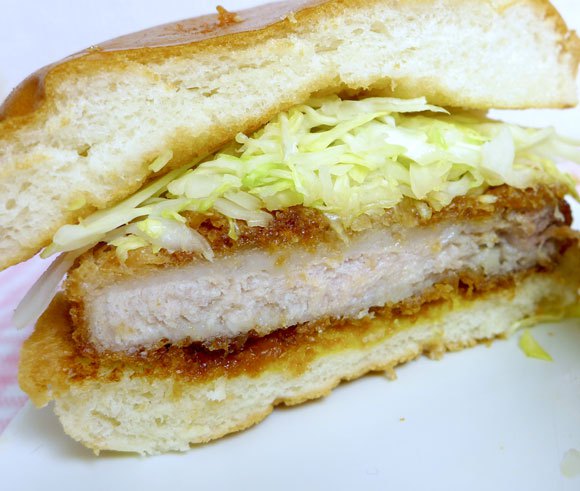
 Does Tokyo’s King of Tonkatsu live up to its name? We find out 【Taste Test】
Does Tokyo’s King of Tonkatsu live up to its name? We find out 【Taste Test】 What happens when a sweet bun maker teams up with a tonkatsu sandwich specialist?
What happens when a sweet bun maker teams up with a tonkatsu sandwich specialist? Tokyo all-you-can-eat tonkatsu pork cutlet restaurant is all we need for a happy meal
Tokyo all-you-can-eat tonkatsu pork cutlet restaurant is all we need for a happy meal Katsu curry rice you can eat with your hands? Mos Burger unveils new Rice Burger Katsu Curry
Katsu curry rice you can eat with your hands? Mos Burger unveils new Rice Burger Katsu Curry Lotteria’s Tsukimi Rib Sandwich joins the fight for Japanese tsukimi supremacy【Taste test】
Lotteria’s Tsukimi Rib Sandwich joins the fight for Japanese tsukimi supremacy【Taste test】 McDonald’s new Happy Meals offer up cute and practical Sanrio lifestyle goods
McDonald’s new Happy Meals offer up cute and practical Sanrio lifestyle goods More foreign tourists than ever before in history visited Japan last month
More foreign tourists than ever before in history visited Japan last month Starbucks reopens at Shibuya Scramble Crossing with new look and design concept
Starbucks reopens at Shibuya Scramble Crossing with new look and design concept Is the new Shinkansen Train Desk ticket worth it?
Is the new Shinkansen Train Desk ticket worth it? Our reporter takes her 71-year-old mother to a visual kei concert for the first time
Our reporter takes her 71-year-old mother to a visual kei concert for the first time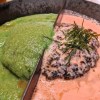 Hamburg and Hamburg Shibuya: A Japanese restaurant you need to put on your Tokyo itinerary
Hamburg and Hamburg Shibuya: A Japanese restaurant you need to put on your Tokyo itinerary Sakura season schedule is screwed up, so we had a no-cherry blossom cherry blossom party in the office
Sakura season schedule is screwed up, so we had a no-cherry blossom cherry blossom party in the office Tokyo’s most famous arcade announces price increase, fans don’t seem to mind at all
Tokyo’s most famous arcade announces price increase, fans don’t seem to mind at all Hey, Japanese taxi driver! Take us to your favorite restaurant in Tsuruga City!
Hey, Japanese taxi driver! Take us to your favorite restaurant in Tsuruga City! Ghibli Park opens final area to first visitors, with stunning new attractions and shops 【Videos】
Ghibli Park opens final area to first visitors, with stunning new attractions and shops 【Videos】 Disney princesses get official manga makeovers for Manga Princess Cafe opening in Tokyo
Disney princesses get official manga makeovers for Manga Princess Cafe opening in Tokyo We try out “Chan Ramen”, an underground type of ramen popular in the ramen community
We try out “Chan Ramen”, an underground type of ramen popular in the ramen community Foreign English teachers in Japan pick their favorite Japanese-language phrases【Survey】
Foreign English teachers in Japan pick their favorite Japanese-language phrases【Survey】 Beautiful new Final Fantasy T-shirt collection on the way from Uniqlo【Photos】
Beautiful new Final Fantasy T-shirt collection on the way from Uniqlo【Photos】 There’s a park inside Japan where you can also see Japan inside the park
There’s a park inside Japan where you can also see Japan inside the park New Studio Ghibli bedding sets are cool in all senses of the word
New Studio Ghibli bedding sets are cool in all senses of the word Japanese convenience store packs a whole bento into an onigiri rice ball
Japanese convenience store packs a whole bento into an onigiri rice ball Hanton rice — a delicious regional food even most Japanese people don’t know about, but more should
Hanton rice — a delicious regional food even most Japanese people don’t know about, but more should New Pokémon cakes let you eat your way through Pikachu and all the Eevee evolutions
New Pokémon cakes let you eat your way through Pikachu and all the Eevee evolutions Studio Ghibli releases Kiki’s Delivery Service chocolate cake pouches in Japan
Studio Ghibli releases Kiki’s Delivery Service chocolate cake pouches in Japan Japan’s bone-breaking and record-breaking roller coaster is permanently shutting down
Japan’s bone-breaking and record-breaking roller coaster is permanently shutting down New definition of “Japanese whiskey” goes into effect to prevent fakes from fooling overseas buyers
New definition of “Japanese whiskey” goes into effect to prevent fakes from fooling overseas buyers Foreign passenger shoves conductor on one of the last full runs for Japan’s Thunderbird train
Foreign passenger shoves conductor on one of the last full runs for Japan’s Thunderbird train Our Japanese reporter visits Costco in the U.S., finds super American and very Japanese things
Our Japanese reporter visits Costco in the U.S., finds super American and very Japanese things Kyoto bans tourists from geisha alleys in Gion, with fines for those who don’t follow rules
Kyoto bans tourists from geisha alleys in Gion, with fines for those who don’t follow rules Studio Ghibli unveils Mother’s Day gift set that captures the love in My Neighbour Totoro
Studio Ghibli unveils Mother’s Day gift set that captures the love in My Neighbour Totoro Domino’s Japan now sells…pizza ears?
Domino’s Japan now sells…pizza ears? New Japanese KitKat flavour stars Sanrio characters, including Hello Kitty
New Japanese KitKat flavour stars Sanrio characters, including Hello Kitty Kyoto creates new for-tourist buses to address overtourism with higher prices, faster rides
Kyoto creates new for-tourist buses to address overtourism with higher prices, faster rides Sales of Japan’s most convenient train ticket/shopping payment cards suspended indefinitely
Sales of Japan’s most convenient train ticket/shopping payment cards suspended indefinitely Sold-out Studio Ghibli desktop humidifiers are back so Totoro can help you through the dry season
Sold-out Studio Ghibli desktop humidifiers are back so Totoro can help you through the dry season Japanese government to make first change to romanization spelling rules since the 1950s
Japanese government to make first change to romanization spelling rules since the 1950s Ghibli founders Toshio Suzuki and Hayao Miyazaki contribute to Japanese whisky Totoro label design
Ghibli founders Toshio Suzuki and Hayao Miyazaki contribute to Japanese whisky Totoro label design Doraemon found buried at sea as scene from 1993 anime becomes real life【Photos】
Doraemon found buried at sea as scene from 1993 anime becomes real life【Photos】 Tokyo’s most famous Starbucks is closed
Tokyo’s most famous Starbucks is closed One Piece characters’ nationalities revealed, but fans have mixed opinions
One Piece characters’ nationalities revealed, but fans have mixed opinions We asked a Uniqlo employee what four things we should buy and their suggestions didn’t disappoint
We asked a Uniqlo employee what four things we should buy and their suggestions didn’t disappoint Princesses, fruits, and blacksmiths: Study reveals the 30 most unusual family names in Japan
Princesses, fruits, and blacksmiths: Study reveals the 30 most unusual family names in Japan Studio Ghibli’s new desktop Howl’s Moving Castle will take your stationery on an adventure
Studio Ghibli’s new desktop Howl’s Moving Castle will take your stationery on an adventure Guilt-free snacking with 129-calorie bags of faux fried pork Innocent Tonkatsu
Guilt-free snacking with 129-calorie bags of faux fried pork Innocent Tonkatsu Restaurant Yoshibei is crazy in the best way: A pork cutlet set with a side of pork cutlet bowl
Restaurant Yoshibei is crazy in the best way: A pork cutlet set with a side of pork cutlet bowl Mos Burger’s sauce-soaked Wet Burger sure is wet, but is it worth your burger bucks? 【Taste test】
Mos Burger’s sauce-soaked Wet Burger sure is wet, but is it worth your burger bucks? 【Taste test】 Is this frozen tonkatsu sandwich vending machine really worth 700 yen?【Taste test】
Is this frozen tonkatsu sandwich vending machine really worth 700 yen?【Taste test】 French fry rationing continues in Japan as Mos Burger suspends sales (with two exceptions)
French fry rationing continues in Japan as Mos Burger suspends sales (with two exceptions) Tomahawk Tonkatsu at Japanese restaurant becomes a hot topic online
Tomahawk Tonkatsu at Japanese restaurant becomes a hot topic online The most delicious way to eat tonkatsu blows people’s minds in Japan
The most delicious way to eat tonkatsu blows people’s minds in Japan Survey ranks Japan’s most popular fast food chains, McDonald’s surprisingly not No. 1
Survey ranks Japan’s most popular fast food chains, McDonald’s surprisingly not No. 1 Mos Burger teams up with Nintendo’s Kirby, charms Internet with adorable burger wrappers and bags
Mos Burger teams up with Nintendo’s Kirby, charms Internet with adorable burger wrappers and bags Eating Japan’s Sailor Moon moon-viewing sausage sandwich【Taste test】
Eating Japan’s Sailor Moon moon-viewing sausage sandwich【Taste test】 Okinawa soul food: We try the most epic pork and egg onigiri rice balls in Japan
Okinawa soul food: We try the most epic pork and egg onigiri rice balls in Japan McDonald’s and KFC Japan release new Tsukimi “moon-viewing” burgers for 2020
McDonald’s and KFC Japan release new Tsukimi “moon-viewing” burgers for 2020 Is Lotteria’s new meat sauce burger a challenge to the reign of Mos Burger’s Japanese classic?
Is Lotteria’s new meat sauce burger a challenge to the reign of Mos Burger’s Japanese classic? Cheapo News: We find a place in Hiroshima serving tonkatsu pork cutlets for just 350 yen
Cheapo News: We find a place in Hiroshima serving tonkatsu pork cutlets for just 350 yen Hokkaido, Osaka, and Fukuoka: Taste-testing McDonald’s oddly named Adult Regional Teriyaki burgers
Hokkaido, Osaka, and Fukuoka: Taste-testing McDonald’s oddly named Adult Regional Teriyaki burgers Burger King is releasing a Fake Burger in Japan
Burger King is releasing a Fake Burger in Japan
Leave a Reply